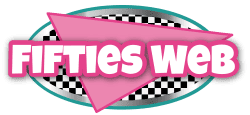The 1950s holds a significant place of influence and inspiration when it comes to men’s hairstyle. This pivotal decade introduced a unique blend of culture, fashion, and societal changes that left an indelible mark on the way people approached their hair. Understanding the influence of the 1950s on hair styling provides us with valuable insights into the origins and evolution of iconic hairstyles.
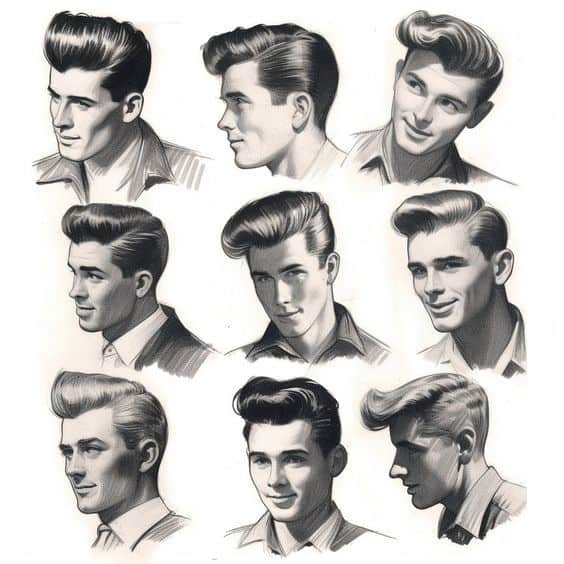
During the 1950s, the United States was experiencing a post-war economic boom, and this prosperity was reflected in the fashion and grooming choices of the time. The decade was marked by a strong emphasis on neatness, conformity, and a desire for sophistication. These cultural shifts were mirrored in men’s hairstyles, where a sense of polish and orderliness became paramount.
The 50s Look
The key elements of the 50s look in hair styling can be distilled into a few essential characteristics:
- Clean-Cut Appearance: The 1950s promoted a clean and well-groomed aesthetic. Men’s hair was typically kept short and tidy, reflecting a sense of discipline and professionalism.
- Structured Styles: Many of the popular hairstyles of the 1950s were characterized by structured, well-defined shapes. These styles often featured distinct lines, such as side parts, pompadours, and flat tops.
- Use of Hair Products: Hair products like pomade, wax, and gel played a pivotal role in achieving and maintaining the desired look. These products provided hold, shine, and the ability to shape the hair into precise styles.
- Attention to Detail: The 1950s look was all about precision. Men would often visit barbershops regularly to ensure that their hair was trimmed, shaped, and styled with meticulous attention to detail.
- Influence of Pop Culture: Icons like Elvis Presley and James Dean, who sported iconic 1950s hairstyles, had a profound impact on popularizing these looks. The media and entertainment industry played a significant role in shaping public perception of the ideal hairstyle.

Cary Grant. He exuded a timeless class which still endures.
Understanding these key elements not only provides insight into the aesthetics of 1950s hair styling but also allows us to appreciate the cultural and societal factors that influenced the choices people made in their grooming routines during that era. These elements continue to inspire and inform modern hair styling, as the timeless appeal of 1950s hairstyles endures to this day.
Popular 1950s Men’s Hairstyles
Here are some of the most popular men’s hair styles in the 50s
1. The 50s Pompadour
The pompadour is a bold and stylish hairstyle characterized by a voluminous, swept-back appearance. It features short sides and back, with a dramatically styled top.
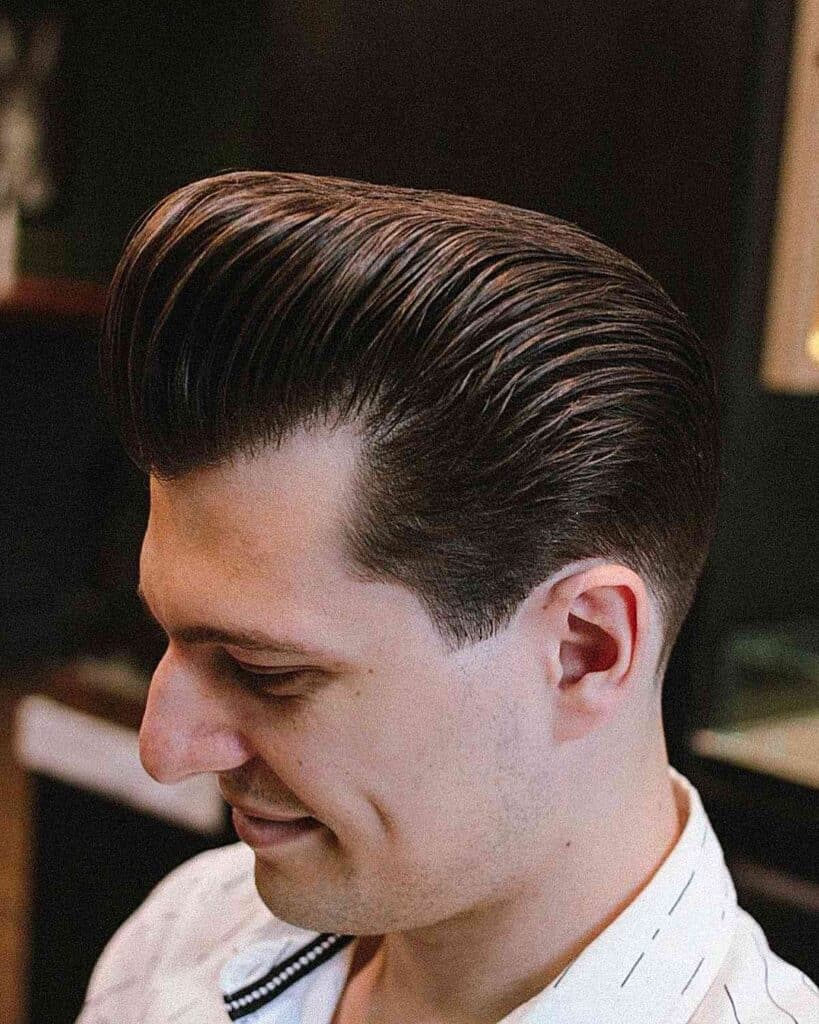
Slicked-Back Top achieves a polished appearance, which is essential for this style. The use of Pomade or Wax products are crucial for providing hold and shine.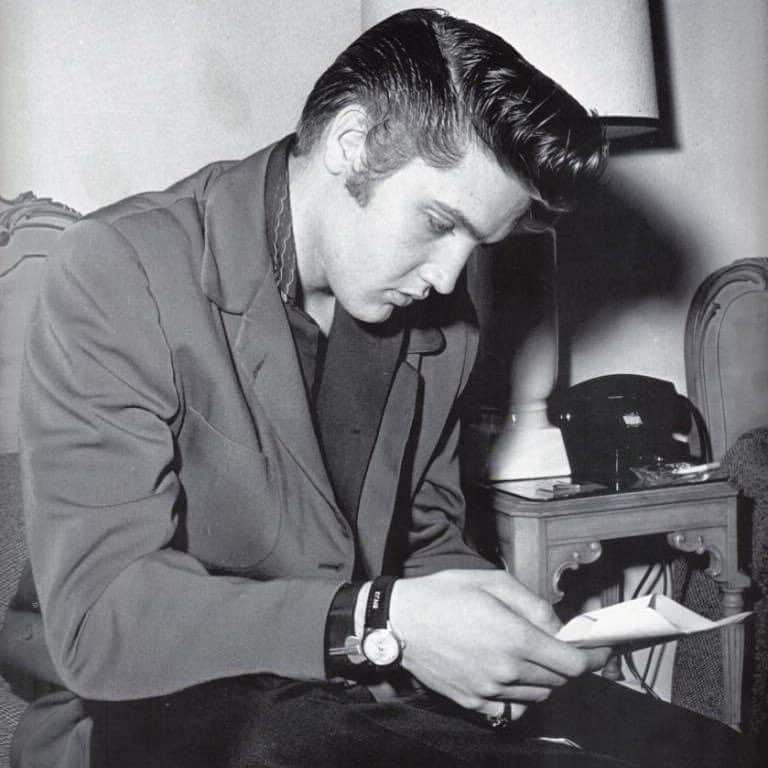
Styling Tips and Products: For a polished pompadour, apply pomade evenly throughout your hair to create a glossy finish. A fine-toothed comb is your best friend for achieving precise styling.
2. The 50s Crew Cut
The crew cut is a short and tidy haircut known for its clean and timeless look. It features tapered sides and back.
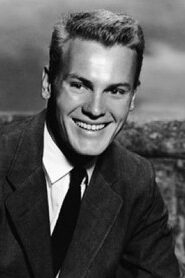
Hair is typically less than an inch long with and evenly trimmed sides. This creates a uniform appearance.
Styling Tips and Products: The beauty of the crew cut lies in its simplicity. Minimal styling is required; a quick comb-through with your fingers or a comb is often sufficient. It’s the ideal choice for a no-fuss grooming routine.
3. The Slick Back
The slick back hairstyle involves combing the hair back and away from the face, creating a sleek and elegant appearance.
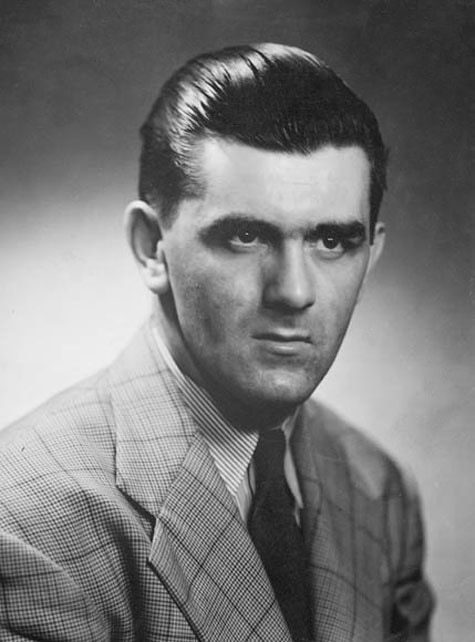
Achieving a glossy smooth texture, controlled look is key. This style often includes a side part.
Styling Tips and Products: To achieve a slick back, apply hair gel or pomade generously to keep your hair in place. Use a comb to create a sharp and defined part, enhancing the overall look.
4. The Side Part
The side part is a classic and versatile style that involves parting the hair to one side and keeping it neatly combed.
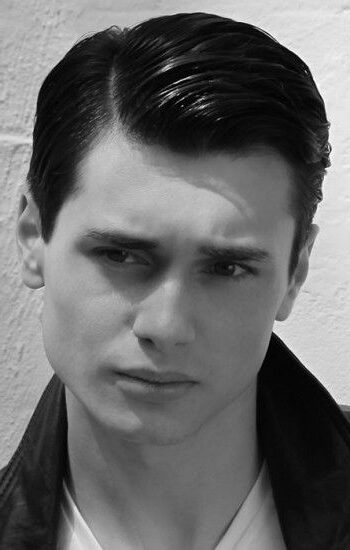
A Sharp parting line creates a clear division between the hair sections. Tapered Sides provides contrast and structure.
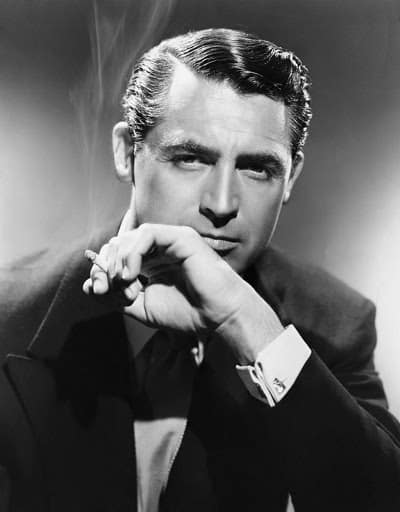
Styling Tips and Products: To maintain the elegance of the side part, use pomade or wax to keep your hair in place. Consider combining this style with a fade for a modern twist.
5. The Ducktail
The ducktail, also known as the “D.A.,” is a distinctive style where the hair is combed back, and the center portion is formed into a V-shape resembling a duck’s tail.
The defining feature that resembles a duck’s tail is the V-Shaped back. Often accompanied by short, tapered slick sides.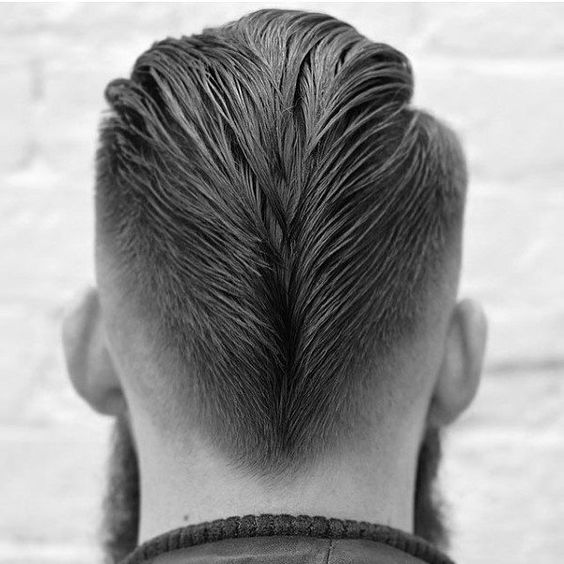
Styling Tips and Products: To create the characteristic ducktail shape, use pomade to slick your hair back and shape it into the V-form. Regular maintenance is essential to retain the distinct look.
6. The Ivy League
The Ivy League haircut is a sophisticated and neat hairstyle characterized by short sides and back, with a slightly longer top that can be side-parted or combed forward.
This haircut emphasizes a tidy, professional and neat appearance. The top can vary based on personal preference.
Styling Tips and Products: For different looks, you can comb the top forward or to the side. Light styling products help maintain a natural finish while keeping the hair in place.
7. The Flat Top
The flat top is a bold and angular haircut with a flat, square-shaped top, known for its distinctive, boxy appearance.
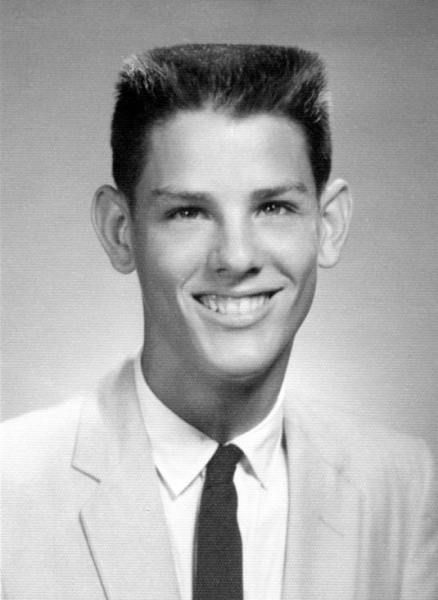
Hair is cut straight across the top (squared top). You get a high and flat profile which gives it the characteristic look.
Styling Tips and Products: Maintaining the flat top shape requires regular trimming. Minimal styling products are needed; the hair should remain firm to retain the boxy appearance.
8. The Afro
While more closely associated with the 1960s and 1970s, the early stages of the Afro hairstyle emerged in the late 1950s. It’s characterized by voluminous, naturally curly hair that extends out from the scalp.
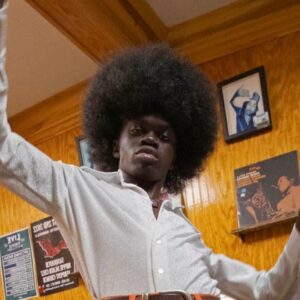
This haircut embraces the natural texture of the hair. Creates a distinctive silhouette of a large volume of hair.
Styling Tips and Products: To maintain an Afro, use moisturizing products to keep the hair healthy and hydrated. Gentle combing or picking helps maintain the desired shape and volume.
1950s Men’s Haircare Routine
In the 1950s, men’s haircare was a well-considered regimen. It consisted of two fundamental aspects: shampoo and conditioner. Selecting the right products was crucial, as the goal was to maintain a polished appearance while keeping the hair healthy. Proper washing techniques were employed to ensure cleanliness and prevent over-drying. Haircare in the 1950s was all about maintaining a neat and well-groomed look.
Maintaining hair in the 1950s required dedication and consistency. Regular trims and visits to the barbershop were essential components of the grooming routine. The importance of consistent maintenance cannot be overstated; it ensured that the hair remained in the desired shape and length.
Finding the right barber for men was a critical decision, as their expertise played a significant role in achieving the perfect hairstyle.
If you’re not going to the barber then your day began with brushing and styling the hair in the morning. The meticulous use of combs and brushes was essential. Throughout the day, touch-ups were common to keep the hair in place and preserve the sharpness of the hairstyle.
Styling Products
During the 1950s, the choice of styling products for men’s hair was a pivotal decision in achieving the perfect look. Three primary options dominated the grooming scene: pomade, gel, and wax. The selection among these products depended on the desired hairstyle and individual preferences.
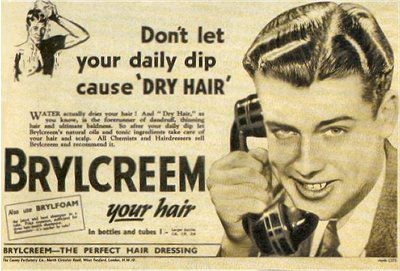
Pomade
Pomade was a popular choice for achieving the slick and glossy appearance synonymous with many 1950s hairstyles. This greasy, wax-like substance provided a firm hold and a high shine finish. To use pomade, a small amount was scooped onto the fingertips and then evenly distributed throughout the hair. It allowed for precise styling and molding, which was crucial for iconic styles like the pompadour and slick back.
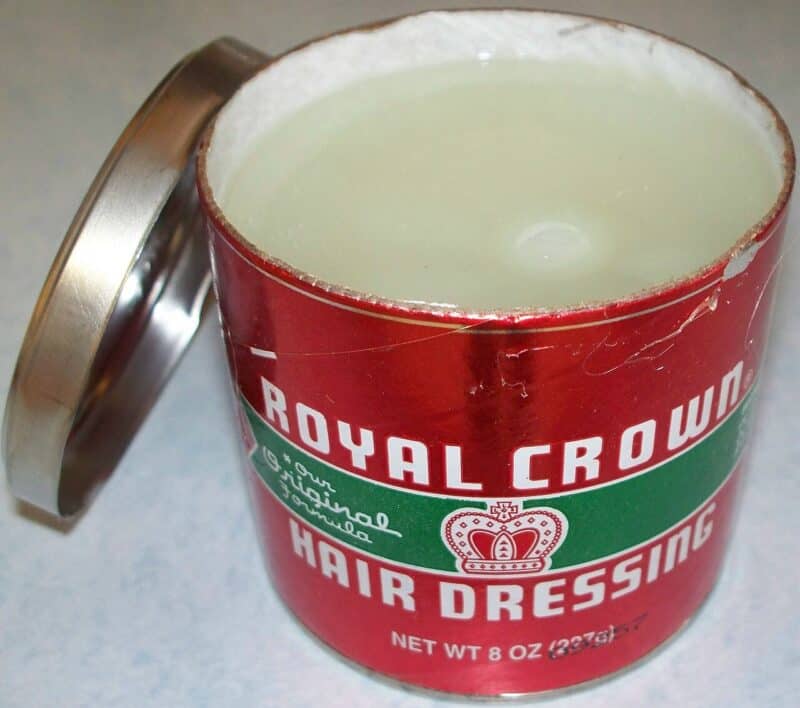
Gel
Hair gel was another go-to product in the 1950s, especially for those looking to achieve a firm hold that kept their hair in place all day. Unlike pomade, gel offered a wet look, which was favored for styles requiring a sharp, well-defined appearance. Gel was applied by combing it through damp or dry hair, and it dried to a stiff finish that held the hair in the desired shape.
Wax
Wax was preferred by individuals seeking a more natural and flexible hold. It provided control without the extreme firmness of gel or pomade. Wax was applied by rubbing a small amount between the palms to soften it before running it through the hair. It allowed for movement and re-styling throughout the day, making it a versatile choice for various 1950s hairstyles.
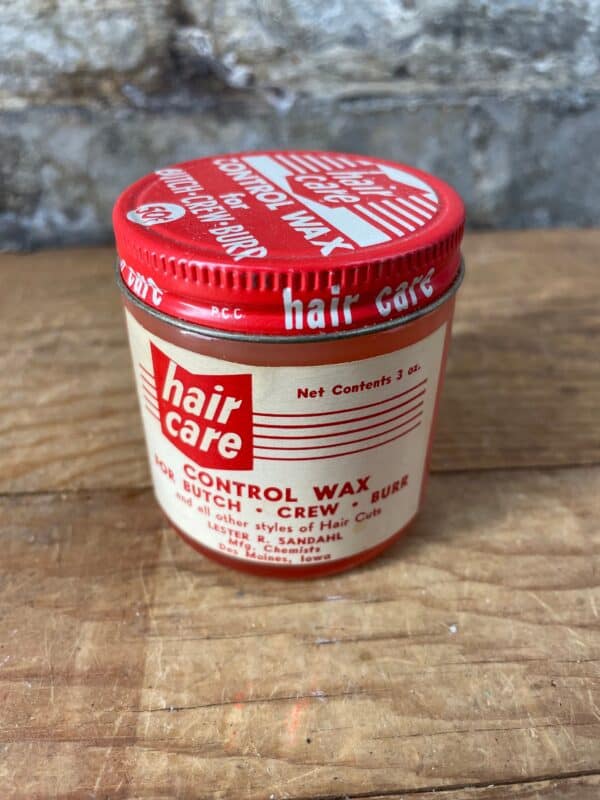
The art of applying these styling products was known to barbers who mastered the craft. For pomade, it was crucial to apply it evenly to prevent clumps and ensure a consistent shine. A fine-toothed comb was often used for precise styling, creating the sleek and structured appearance typical of the era.
With gel, it was important to work quickly to evenly distribute the product before it set. Combing or brushing the hair into the desired style while the gel was still pliable was essential. For wax, the key was to avoid overloading the hair; a little went a long way. The wax was warmed in the hands for easy application and shaping.
For many college students, managing their style is an important part of their self-expression, and hair styling plays a significant role. Wax has become a popular choice for students as a human written essay service like DoMyEssay . Whether for a day of lectures or a night out with friends, wax allows students to shape their hair without the worry of it losing its structure. The key to using wax is moderation—applying a small amount ensures a matte finish and a controlled, textured look that lasts throughout the day. It’s easy to re-style throughout the day, making it ideal for busy college students who need their hair to look good no matter the occasion.
The choice between these styling products depended on the specific hairstyle and the level of control and finish desired. Ultimately, mastering the art of application and understanding which product best suited one’s hair and style goals were essential aspects of achieving the iconic 1950s look. These products played a vital role in crafting the polished and timeless hairstyles that continue to inspire men’s grooming today.
That’s it!
The grooming routine was part of the 1950s fashion for men. It’s a well-structured and disciplined regimen. It revolved around maintaining a polished and tidy appearance, with a focus on iconic hairstyles like the pompadour, slick back, and side part. By understanding the products and techniques of the era and embracing the timeless appeal of 1950s hairstyles, modern enthusiasts can pay homage to this classic period in men’s grooming.
